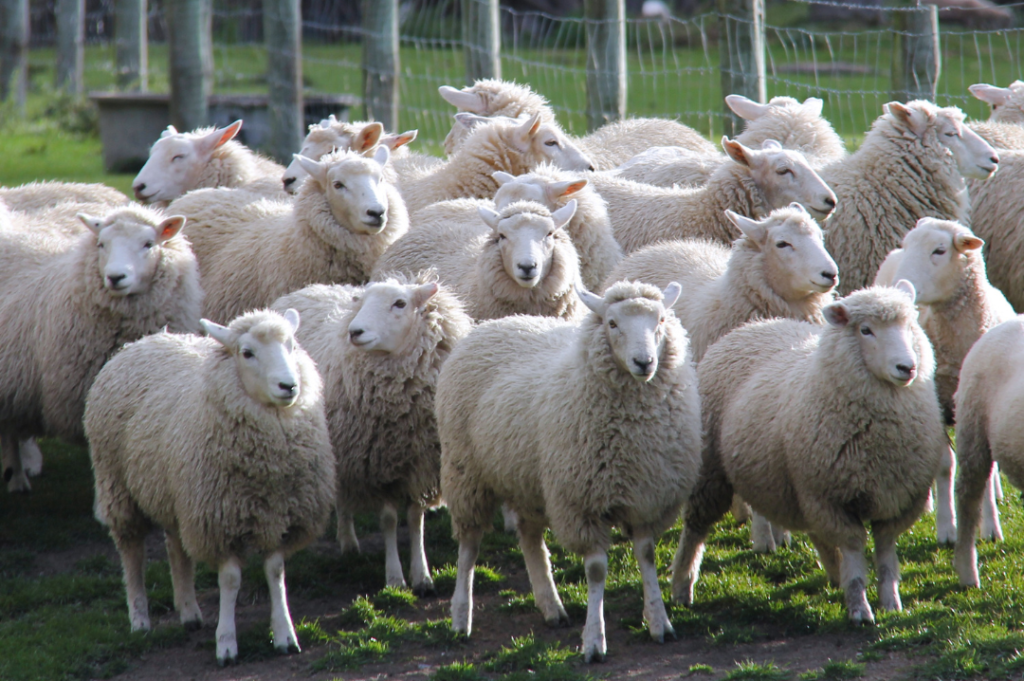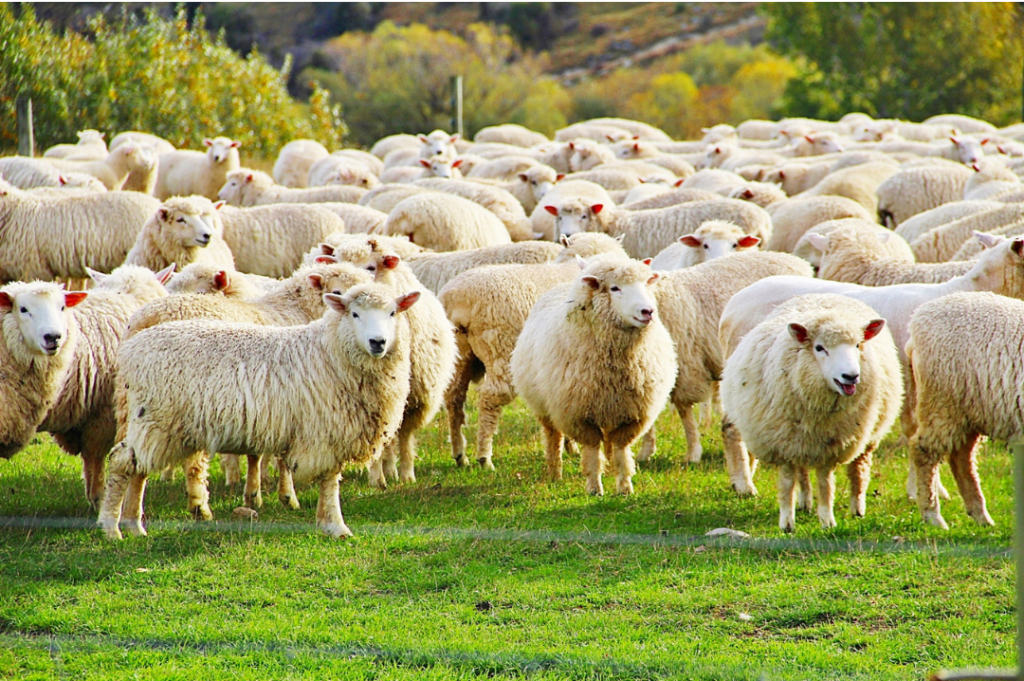This blog post was written by Taylor Sondgeroth and is one of the top five College Aggies Online blogs from 2022.
How often do you see sheep in your everyday life? Whether you are on a long road trip or commuting to work, you may be familiar with passing cattle and horses when driving through rural America. When was the last time you remember passing a flock of sheep, though?
According to the USDA, there are 5.2 million head of sheep and lambs in the US today, with Texas and California leading in production. This number may seem large, but in the scope of American animal agriculture, it is shockingly low. Sheep and lamb production makes up less than 1% of the American livestock industry. It didn’t used to be this way, though. In 1867, approximately 45 million sheep were in the US, peaking at 56 million head in 1945. Where did they all go?

Two major reasons for the decline of sheep production in the US are the decline for demand of wool and lamb meat. The increased use of synthetic fibers in clothing, manufacturing and fabric materials pulled consumers away from wool products. When wool fazed out, lamb meat as a paired product declined with it.
What are some of the challenges sheep producers face?
Sheep require more intensive management than large animal livestock such as beef cattle. Predators are a threat to flocks on vast pastures where fence lines may be difficult to maintain. Producers must choose breeds that lamb in their desired season. Sheep are also highly susceptible to parasites, so rotational grazing and parasite control programs are required for successful production.
Why are sheep still a great option for livestock producers today?
Sheep can be easier to handle than larger livestock. The investment in breeding stock, equipment, and facilities is also lower compared to large animal livestock production. Flocks of sheep can be used to control overgrown vegetation in hard to reach areas. Some regions of the US produce enough forage for sheep to graze year round, which reduces feed costs for producers. Sheep are also more efficient than beef cattle because they convert forage to retail product, wool.
Wool is a breathable fiber found in clothing, firefighting uniforms, furniture, fertilizers, insulators, and much more. Wool is natural, biodegradable fiber unlike synthetic fibers like polyester, acrylic, and nylon. Wool also has antibacterial and antimicrobial properties from the thin and waxy coating of fatty acids which inhibit the growth of mold, mildew, and bacteria. One sheep can produce 2-30 pounds of wool annually.

Lamb’s meat is a highly nutritious product of sheep production. Lamb is a rich source of protein. It also contains vitamins and minerals like iron, zinc, and vitamin B12. Regular consumption of lamb can promote muscle growth and also help prevent anemia.
To learn more about sheep production visit Sheepishly Me on YouTube.
All posts are the opinion of the author and do not necessarily represent the view of the Animal Ag Alliance.







